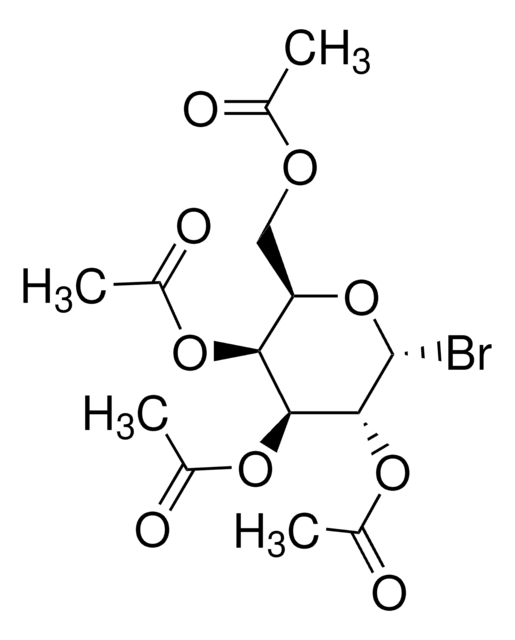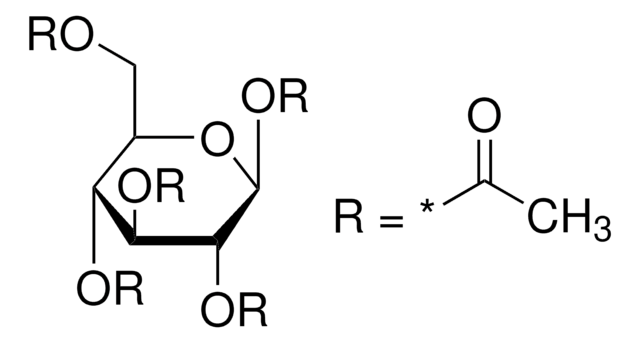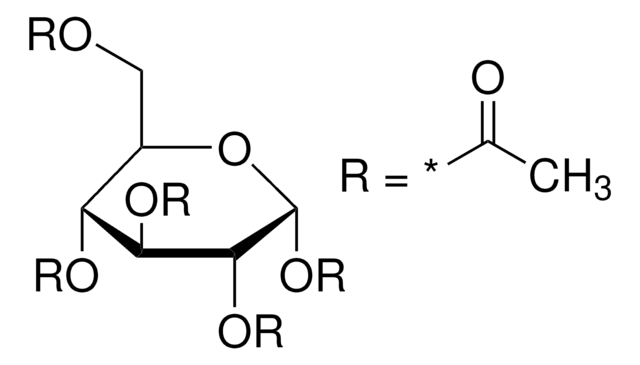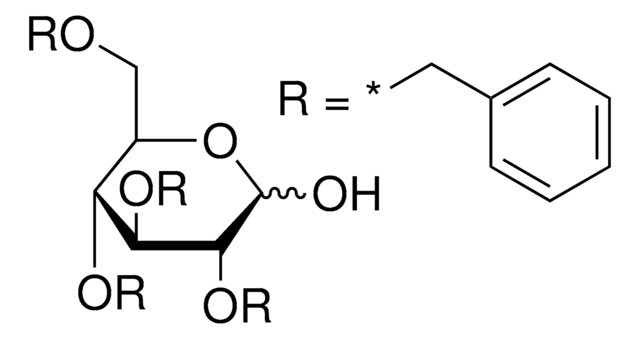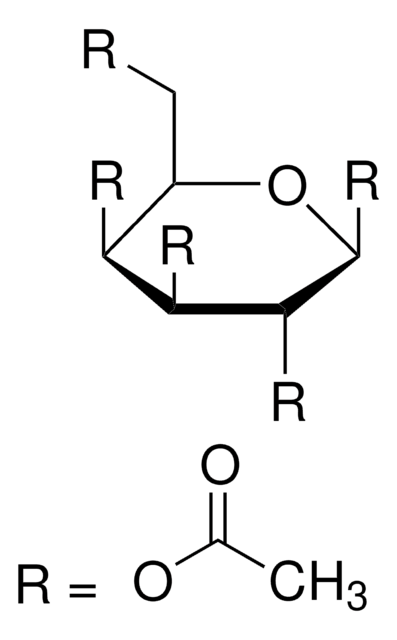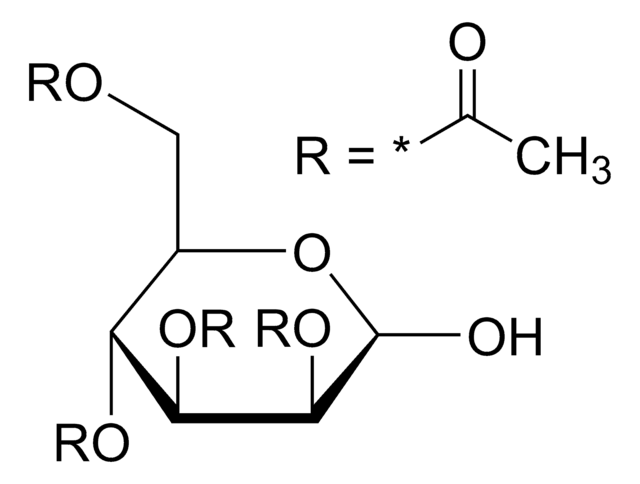A1750
Acetobromo-α-D-glucose
≥95% (TLC)
Synonym(s):
1-Bromo-α-D-glucose tetraacetate, 2,3,4,6-Tetra-O-acetyl-α-D-glucopyranosyl bromide
Sign Into View Organizational & Contract Pricing
Select a Size
All Photos(5)
Select a Size
Change View
About This Item
Empirical Formula (Hill Notation):
C14H19BrO9
CAS Number:
Molecular Weight:
411.20
Beilstein/REAXYS Number:
96669
MDL number:
UNSPSC Code:
12352201
PubChem Substance ID:
NACRES:
NA.25
Recommended Products
biological source
synthetic (organic)
Quality Level
assay
≥95% (TLC)
form
powder
optical activity
[α]25/D 188 to 202 °, c = 1 in chloroform
contains
1% CaCO3 as stabilizer
color
white to off-white
mp
88.5 °C ((191.3 °F ))
shipped in
dry ice
storage temp.
−20°C
Looking for similar products? Visit Product Comparison Guide
Application
Acetobromo-α-D-glucose is used as a possible poly (ethylene terephthalate) (PET) surface modification reagent to increase its blood compatibility.
Other Notes
To gain a comprehensive understanding of our extensive range of Monosaccharides for your research, we encourage you to visit our Carbohydrates Category page.
signalword
Warning
hcodes
Hazard Classifications
Eye Irrit. 2 - Skin Irrit. 2 - STOT SE 3
target_organs
Respiratory system
Storage Class
11 - Combustible Solids
wgk_germany
nwg
flash_point_f
Not applicable
flash_point_c
Not applicable
Choose from one of the most recent versions:
Already Own This Product?
Find documentation for the products that you have recently purchased in the Document Library.
Customers Also Viewed
Our team of scientists has experience in all areas of research including Life Science, Material Science, Chemical Synthesis, Chromatography, Analytical and many others.
Contact Technical Service